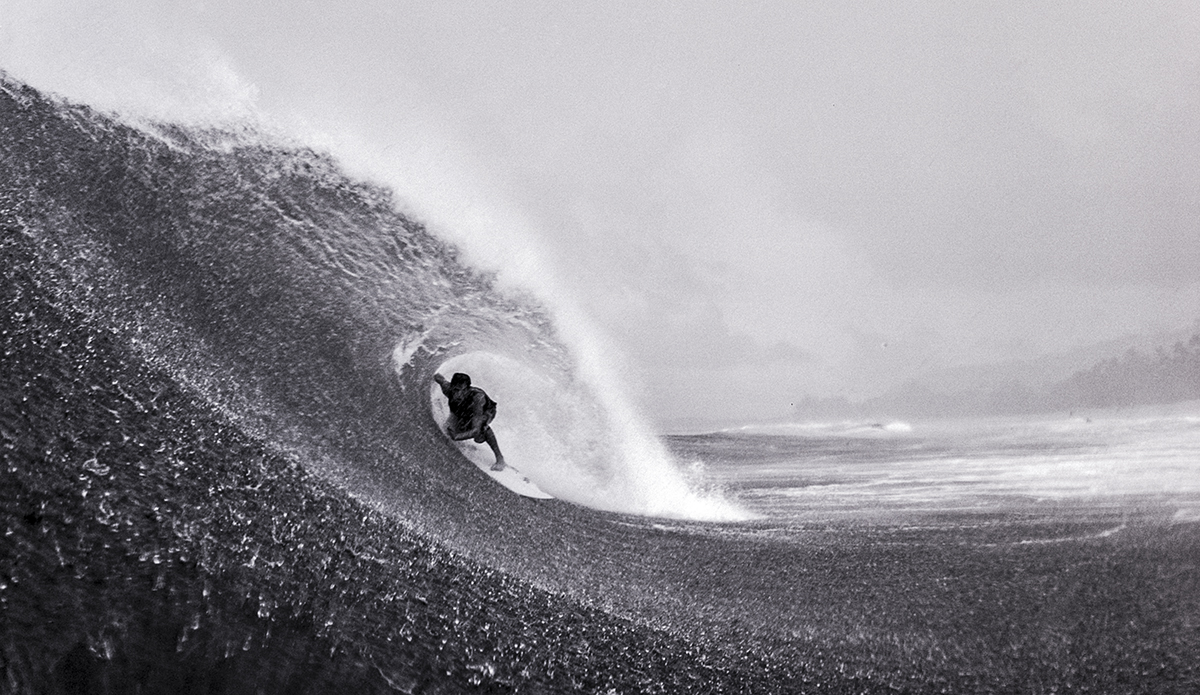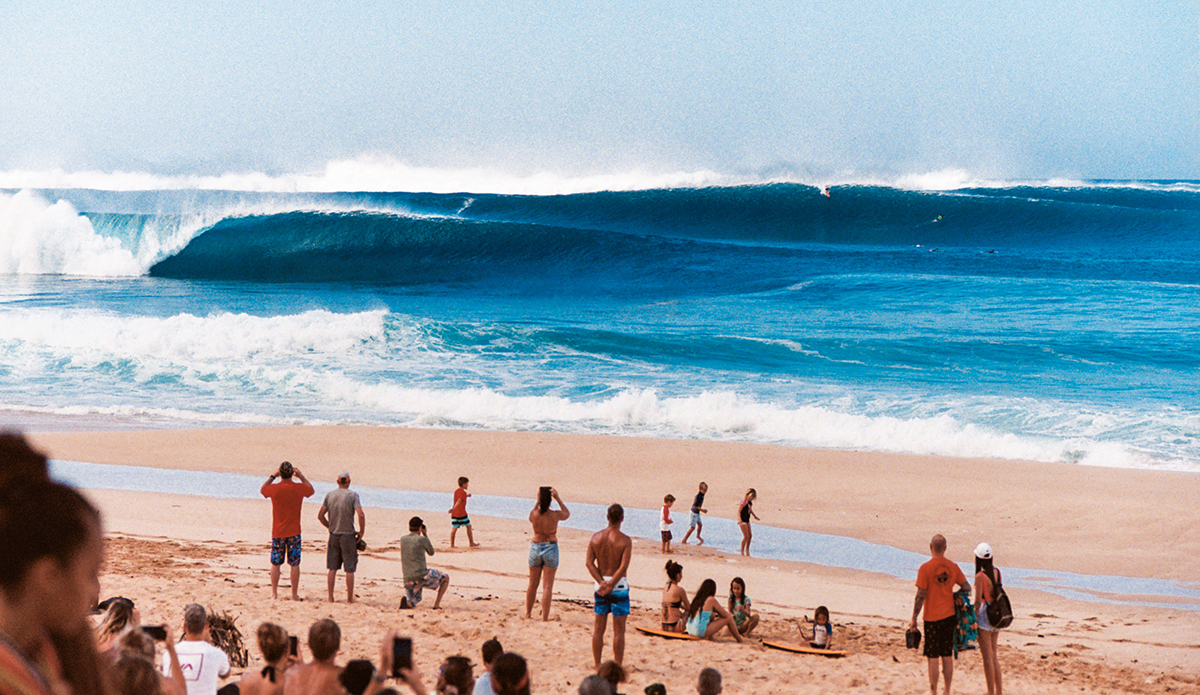When I decided to try shooting surf on film, the experience of buying the camera was almost more absurd than the act of bringing film into the water itself.
Scouring the internet, I came across one lone listing, titled inconspicuously, “Underwater film camera, works not tested.” The listing was full of photos of a Nikonos V, complete with the dive light, extra O rings, lubricant, even spare lenses — all just sitting there collecting dust.
“Great!” I thought to myself as I drove to Malibu. “Some random dude has no idea how much this stuff is worth. If only he liked surfing!” Turns out, he did. The person selling the camera was, in fact, a professional surf photographer. He had taken photos of William Finnegan. Appeared in Surfer’s Journal, even.
But between stacks of ancient magazines and signed skate movie posters, he told me there was no money in surf photography anymore. Especially not if it’s shot on film. “Magazines all want digital now,” he told me, running the O-rings through his fingers, telling me to check for fungus in the viewfinder. There was none.
I bought the camera. But I drove home with the music off, lost as to why a pro surf photographer would give such a novelty item away for so little. Was there really no life left for analog surf photography?
I knew one person who would, surely have answers. Known to many as a “funtographer,” the work of John Hook recently appeared on the cover of TSJ 30.6, and, over the years, he has captured the likes of Nathan Florence, Noa Mizuno, Cliff Kapono, Devon Howard, and Shayden Pacarro. Oh yeah, and he did it all on film.

Peahi, as it was originally conceived. Photo: John Hook
Hook has shot film for over 20 years. “There was a moment there when I got into surf photography where I just wanted to do it, just to see if I could do it,” he said. “I actually felt more comfortable shooting film in the water because I thought it gave off the impression that I was just doing it for fun, and not there to try and steal surf photographers’ jobs. Now it actually feels like more and more people are shooting film in the surf again, and it’s a very current culture.”
He told me he felt lucky to have grown up “right before cell phones.” He has fond memories of his youth, saying, “I loved taking pictures of my friends hanging out and just skateboarding in parking lots and stuff. If anyone wanted a memory of something we had to take an actual photograph of it.”

Traditional board shot on traditional format. Photo: John Hook
But the learning curve working with film was tough. “I brought my film camera everywhere I went and used it every day, but it only had manual photo settings on it, so I had to learn what the camera could do with trial and error,” he said. “Unfortunately, it probably took longer than it would have with a digital camera because I would have to wait a few days just to see if my photos came out on film, and then adjust from there.”
Finding the right camera settings are crucial in any situation, but finding those settings without a screen for reference, with fins and maybe gloves on, all while floating on the inside waiting for the next set wave? He notes one challenge as being especially tricky. “Being more limited to 36 pictures a session instead of, like, thousands, is tough but I feel it’s more rewarding when you get a good one.”
When asked why he puts up with the extra hassle, Hook insisted that, “it’s just more fun on film. The process of shooting film forces me to pay attention to every single moment of a wave, or always being aware of the situation in front of you. I feel I get to enjoy the waves more when I’m actually watching them closely.”

Whatever happened to the ol’ double exposure? Photo: John Hook
Elaborating on the euphoria that often accompanies the development of a good roll, Hook talked specifically about his double exposure images. “It’s like giving myself a birthday present every time I try and shoot them,” he says. “Sometimes they come out awesome, and sometimes they’re just socks from grandma. It’s a great aspect of film photography that you can still create images rather than just capture them, so it can be a great way to get ‘artsy’ and create something out of your brain.”
Still, I wanted to know what would happen to the rest of these old cameras. Are they all doomed to collect dust in pro surf photographers’ apartments? Hook reassured me that there’s still hope.
“There will always be a future in surf photography with film, or just film photography in general,” he says. “There are some amazing film (photos) out there that just look awesome when they are shot in the right conditions. But I think in the future, it will be the amazing digital cameras in our phones that will take over the world. I think it will be interesting in the future to see how ’surf photography’ will be consumed.”
Him and me both. But if everyone picking up these old film cameras produces half the work that John has, we have nothing to fear.
Editor’s Note: John Hook is based in Hawaii.












